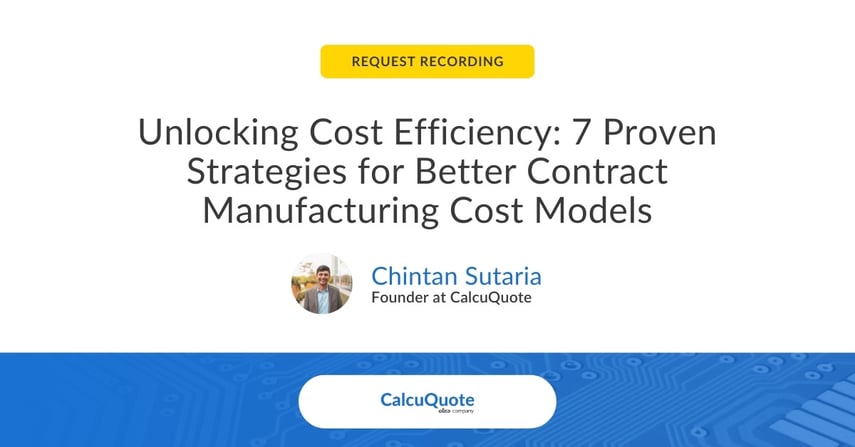7 Ways to Improve your Cost Model

Speaker: CalcuQuote
In this edition of CalcuQuote's monthly webinar series, we review key ways to improve Cost Models for Electronics Manufacturing Services (EMS) companies. This webinar covers seven key points related to identifying and allocating accurate cost models.
Watch recorded webinar
Fill the form and receive the webinar recording link to your email.
Summary of the webinar
Understanding Cost Models vs. Pricing Strategy
A cost model is a tool for estimating product or project costs, while a pricing strategy reflects the perceived value. Accurate cost models ensure that costs like labor and materials are properly captured, which is essential in industries like EMS (Electronics Manufacturing Services).
Mutual Exclusivity and Exhaustiveness in Costing
To avoid overestimating costs, ensure each element of your cost model is both mutually exclusive and exhaustively covered. Failing to do so, especially in complex labor calculations, can result in costly miscalculations.
Breaking Down Labor Costs and Overhead
Burden labor rates must be carefully tracked and updated. A transparent, activity-based costing approach helps allocate overhead accurately, reducing risks of miscalculating profits.
Factoring in Hidden Costs and Overages
Failing to account for material overages, like extra components needed for setup, can inflate costs by up to 30%. Planning for such contingencies in your cost model ensures accurate quoting.
Simplifying Complex Excel Models
Overly complex Excel-based models often contain hidden errors. Regularly reviewing and simplifying formulas helps avoid miscalculations and aligns cost models with current business operations.
Conclusion:
Optimizing cost models is crucial for contract manufacturing success, especially in industries like EMS. By understanding the differences between cost models and pricing strategies, ensuring mutual exclusivity and exhaustiveness in cost calculations, and breaking down labor and overhead accurately, companies can significantly enhance their cost efficiency. Accounting for hidden costs and simplifying outdated Excel models further ensures precision and profitability. Implementing these strategies not only prevents costly errors but also aligns operations with financial goals, fostering a more competitive and sustainable business model.
Other webinars you might be interested
Quoting
Take Your Quoting to the Next Level
Quoting
Cost Modeling, Overhead and Markup
Quoting
Optimize, Simplify & Accelerate Your Quote-to-Cash Cycle
Sign up for future webinars
By submitting this form, you consent to allow CalcuQuote to store and process the personal data submitted above as described in our Privacy Policy